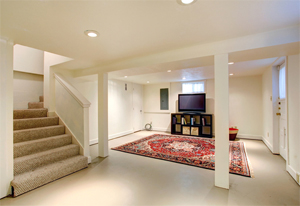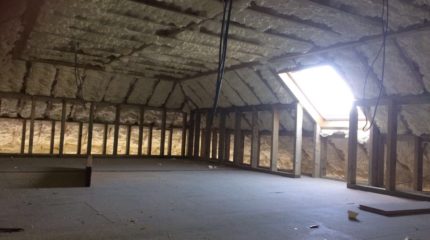The Most Effective Types of Home Insulation
About IcyneneThe amount of considerations when building or renovating your home is endless. With many different trades coming and going, messy floors and clutter building up, it’s crucial to stick to your plan and go step-by-step. One key consideration is home insulation, and knowing which type is best for your project.
So whether you’re insulating a loft, cavity walls or an extension, discover your range of options you have, from Icynene® spray foam insulation to fibreglass sheets.

Icynene® spray foam insulation
- Icynene® R-Value per inch: 6-6.5
Offering unbeatable moisture prevention and savings on fuel bills, spray foam insulation is quickly becoming the nation’s favourite insulation solution – and it’s easy to see why. Icynene® spray foam insulation does exactly what it says; it is applied by being sprayed into the cavity. It then expands 100 times its original size to fill the area.
Icynene® residential spray foam insulation can be applied in all weather conditions, and is available in close-cell and open-cell variants; the former being the best option for exterior walls and loft insulation, due to the higher density. However, open-cell spray foam insulation is better suited for interior walls and soundproofing; the lower density means application is faster and cheaper, while air bubbles within the material dramatically improve soundproofing of the cavity wall.
Fibreglass sheets
- R-Value: 9-3.8 per inch
A very popular choice of home insulation for many years, fibreglass sheets are known for being relatively easy to install and highly cost-effective. The sheets themselves are cheap (approximately £0.50 – £1.00 per square foot) and cut easily with a sharp knife or carpenters blade.
For this reason, many people tend to try and install fibreglass sheets themselves to save time and money, but there is little margin for error when installing this type of home insulation. The smallest of gaps can decrease their effectiveness by up to 50%.
Cellulose insulation
- R-value: 3.2-3.8 per inch on average
Cellulose insulation is often chosen because it is environmentally friendly, largely being made up of recycled materials. It does even require any kind of bleaching process, so recycling is quick and simple. Depending on installation quality, it can also insulate better than fibreglass sheets. To top it off, cellulose insulation is also fire retardant, due to the boric acid it contains.
However, it can be messy as it’s not packed in like fibreglass sheets, or sprayed like spray foam insulation. It can also absorb moisture, so its prevention of moisture through exterior walls is very limited, making it less than adequate for loft insulation and exterior-facing walls.
Want to find out more about Icynene® spray foam insulation and the cost of Icynene® spray foam for your home renovation project? Speak to one of our friendly team members on 0800 246 5051, or get an instant quote.
Back to blogs



